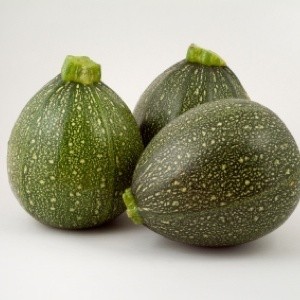 There are endless varieties of flowers, vegetables, and fruits to choose from each year, but only limited amounts of garden space. If you're looking for something new and different this year, consider one of the following three great plants. Each has a unique and valuable characteristic that makes it a useful contribution to the garden.
There are endless varieties of flowers, vegetables, and fruits to choose from each year, but only limited amounts of garden space. If you're looking for something new and different this year, consider one of the following three great plants. Each has a unique and valuable characteristic that makes it a useful contribution to the garden.
These are the heirloom hollyhocks your grandmother used to grow. Popular as far back as the 1700's, this striking hollyhock has only more recently come back into vogue. It was traditionally grown around the out-buildings (including outhouses) on Midwest farmsteads. Instead of asking where the outhouse was, it's been said that women of sophistication would simply look for the hollyhocks.
These lovely biennials produce a stalk of single flowers in a wide variety of colors and reach heights of 6 to 9 feet tall. When planted over successive years, hollyhocks seem like perennials because you get a new crop of flowers every year. The seeds are also easy to save (just let them dry in their pods on the stalk) and often self sow. Use Outhouse hollyhocks in your cottage garden, along the house or garage in foundation plantings, or to screen unsightly objects in the yard and garden like electrical boxes or compost piles. Grow them in full sun to partial shade in zones 3-8.
Not only do zucchini balls have a novel shape, but they are incredibly fun to grow. They have been popular in Europe for many years, in fact Italy, France, Holland, and Great Britain all claim their own unique varieties. Ball zucchini can be used in the same way as "normal" shaped zucchini-in salads, sliced, baked, steamed, stir-fried, or pickled-but because of their shape, they lend themselves particularly well to being "stuffed."
If harvested consistently, these compact plants will produce a prolific amount of fruits bearing a nutty, buttery flavor. Harvest them when they reach the size of a golf ball for a perfectly sized single serving, or when they grow to the size of a softball if you want to stuff them. To grow them, plant 4-6 seeds in hills spaced 3 to 4 feet apart and thin to the three hardiest plants. Like most vegetables, ball zucchini prefer full sun.
Goji berries are high in antioxidants and help strengthen our immune system. If you've ever priced them at a health food store, you've seen the jaw-dropping price they command per pound. That's because few plants are grown in the United States commercially. The berries themselves are juicy and sweet when eaten fresh, and taste similar to cranberries or dates when dried. They also make great juice, wine, and tea.
Goji plants grow from 6 to 10 feet tall and are self-pollinating. They produce trumpet-shaped white and purple flowers in the early summer (both colors on the same plant), but need to reach at least 3 years of age before producing any berries. Goji plants will require regular pruning to maintain a tidy shape and form, although letting them go will result in a lot more berries. Plant them in full sun in zones 5-9.
Here are the questions asked by community members. Read on to see the answers provided by the ThriftyFun community.
Hope R from Oklahoma
A: Hope,
As long as the ground isn't frozen, there are a number of plants and flowers suitable for cold weather planting in your zone.
Examples of Annuals: Ornamental Cabbage and Kale, Snapdragons, Dust Miller, Larkspur, Asters, Calendulas, Dianthus.
Examples of Perennials: These include Shirley Poppies, Winter Pansy, Ivy, Rudbeckia, Primrose, Chrysanthemums and Forget-Me-Not.
Don't forget the garden vegetables and herbs. Ornamental Peppers make a beautiful addition to the fall garden (and kitchen). Also try onions, leeks and garlic. Some herbs will also do fine in a milder winter if planted in a protected area. Examples include Sage, Rosemary and Thyme.
Now is also the best time to plant trees and ornamental shrubs.
Hi Hope,
Any perennials that are hardy in your zone can be planted now. For fall color you could also plant pansies, ornamental kale, ornamental cabbage and mums.
Newt
Helleborus, or lenten rose is a good choice if you get real cold temperatures. witch hazel bushes actually bloom yellow flowers in the winter. the other post mentioned pansies for cooler weather.
When it is getting down to about 30 - 40 degrees at night, should you water flowers outside any less?""
Hi!
I just got flowers as a surprise for my brithday but I just saw them sitting outside in the cold. It's like 10 degrees here in minnesota.....maybe even less! I don't know how long they've been sitting out there but somehow they aren't dead yet....and they are in a vase with water. What should I do to help extend there life?? and revive them from the cold?
Hi Hope
We are moving to California to Idaho soon.
I have "night blooming Jasmin" "Bird of pardise" I would like to take them there.
If you water down your flowers before a frost you won't have to cover them up.
I am wanting to plant, in my front yard, some eye catching, easy to grow fall flowers. Any recommendations?
By Lee
Check out these photos.
No matter how small a garden is, a mix of perennials, annuals, and shrubs will guarantee colour all season long.
Because they will grace your garden season after season, choosing perennials for your garden can have an enduring effect on the overall appearance. Native plants are a good choice as are plants that do well in your area. Check neighbor's gardens, the local nursery, or contact a master gardener. This is a page about help choosing perennials.